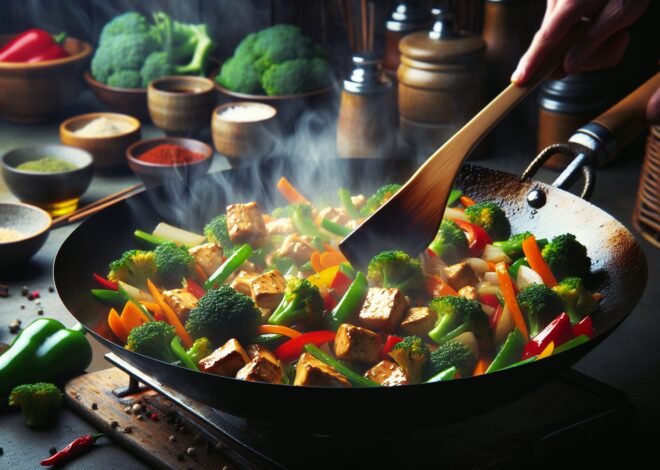
Best Tips for Converting Fahrenheit to Celsius for Baking
Converting Fahrenheit to Celsius can be a common challenge for bakers, especially when dealing with international recipes. This article will provide you with the best tips for easy and accurate conversion, helping you follow your favorite recipes without hassle. Learn how to make the conversion process straightforward and ensure your baking results are consistent regardless of the temperature scale used.
Basics of Temperature Conversion
Understanding temperature conversion is essential for various everyday tasks, from cooking to scientific experiments. This section delves into the fundamentals of temperature conversion, exploring the differences between Fahrenheit and Celsius, the importance of temperature conversion, and simple methods to switch between these scales effortlessly.
Understanding Fahrenheit and Celsius
Fahrenheit and Celsius are the two most common temperature scales used across the globe. While Fahrenheit is primarily used in the United States, Celsius is the standard for most other countries. Recognizing the differences between these scales is crucial for accurate temperature readings. Fahrenheit uses a scale where water freezes at 32 degrees and boils at 212 degrees. In contrast, the Celsius scale sets the freezing point of water at 0 degrees and the boiling point at 100 degrees. This fundamental difference highlights the need for effective conversion methods across different contexts.
Why Conversion is Important
Temperature conversion becomes essential when interpreting data across different systems. Whether you’re following a recipe from a foreign cookbook or conducting scientific research, accurate temperature conversion ensures precision. Misinterpretation can lead to cooking disasters or flawed experimental results. Conversion is also vital in meteorology, where understanding weather data from different countries requires accurate temperature scaling. The importance of learning these conversions extends to travel, where engaging with local measurements enhances the experience.
Simple Conversion Methods
Converting temperatures between Fahrenheit and Celsius can be straightforward with a few simple formulas. To convert Fahrenheit to Celsius, subtract 32 from the Fahrenheit temperature, then multiply by 5/9. Conversely, to convert Celsius to Fahrenheit, multiply the Celsius temperature by 9/5, then add 32. These formulas offer a quick and easy way to switch between scales without needing complex calculations. For those who prefer not to memorize formulas, various tools and resources can simplify the process.
Tools for Easy Conversion
With the basics covered, using tools can streamline temperature conversion even further. This section highlights several resources that make conversion quick and stress-free, including conversion charts, online calculators, and handy mobile apps.
Using Conversion Charts
Conversion charts are a reliable tool for those who prefer a visual guide. These charts offer a side-by-side comparison of Fahrenheit and Celsius values, allowing for quick reference. They are particularly useful in professional kitchens and laboratories where precise temperature readings are crucial. Placing a conversion chart in a convenient location can save time and improve efficiency in both cooking and scientific settings.
Online Conversion Calculators
For those who prefer digital solutions, online conversion calculators offer a convenient option. These calculators require users to input a temperature value and select the desired conversion. The result is immediate and eliminates the potential for human error. Online calculators are accessible from any device with internet access, making them a versatile tool for home cooks, travelers, and scientists alike.
Temperature Conversion Apps
Mobile apps provide an on-the-go solution for temperature conversion needs. These apps often include additional features such as history logs, favorite conversions, and customizable settings. Available on both iOS and Android platforms, temperature conversion apps cater to diverse user preferences. They offer a user-friendly interface and are ideal for those who need frequent access to conversion tools in various environments.
Common Conversion Mistakes
Despite the available tools and methods, errors in temperature conversion are not uncommon. This section explores some of the most frequent mistakes, offering tips to avoid them and ensure accurate conversions every time.
Misreading Temperature Scales
One of the most common errors in temperature conversion is misreading the scale. This mistake can occur when individuals overlook the difference between Fahrenheit and Celsius, leading to inaccurate conversions. Double-checking the temperature scale before beginning any conversion process can prevent these errors. Additionally, paying close attention to the context, such as the origin of a recipe, can provide clues about the likely temperature scale used.
Adjusting for Oven Differences
Another frequent issue arises when converting oven temperatures, as ovens may not maintain consistent temperatures. Calibration differences between ovens can result in temperature discrepancies that affect baking and cooking outcomes. To address this, use an oven thermometer to verify the actual temperature inside the oven. Adjusting recipes based on your specific oven’s performance ensures more accurate results.
Practice Tips for Accuracy
Practice is key to mastering temperature conversion. Regularly engaging with conversion exercises can improve confidence and accuracy. Consider practicing with different scenarios, such as cooking, traveling, or scientific experiments. Use a variety of tools, from charts to apps, to become fluent in switching between temperature scales. Over time, these practices can help you avoid common mistakes and become proficient in temperature conversion.
Conclusion
Converting Fahrenheit to Celsius is a crucial skill for any baker working with international recipes. With the right tools and understanding of temperature scales, you can make conversions easily and ensure consistency in your baking. Avoid common mistakes, and use reliable methods to achieve the best results in your kitchen.
FAQ
How do I convert Fahrenheit to Celsius for baking?
To convert Fahrenheit to Celsius for baking, subtract 32 from the Fahrenheit temperature and then multiply by 5/9. This formula helps achieve accurate baking results, ensuring your recipes turn out perfectly.
What tools can help me with temperature conversion?
Several tools can assist with temperature conversion. Digital kitchen thermometers often include conversion functions. Additionally, using online calculators or dedicated kitchen conversion charts ensures correct temperature settings.
Are there apps for quick temperature conversions?
Yes, various apps offer quick temperature conversions. Popular options include Kitchen Calculator and Convert Units. These apps provide fast and reliable solutions, perfect for busy baking sessions.
Why is temperature conversion important in baking?
Temperature conversion is crucial in baking to maintain recipe accuracy. Incorrect temperatures can affect texture and taste. Ensuring proper conversion leads to consistent and delicious results every time.
What are the common pitfalls in temperature conversion?
Common pitfalls include miscalculations and overlooking decimal points. Using the wrong conversion formula also creates issues. Double-checking conversions and utilizing reliable tools minimizes these errors.
How can I ensure my conversions are accurate?
Ensure accuracy by using trusted conversion methods and tools. Double-check calculations and verify with a secondary source if needed. Consistent practice and attention to detail help maintain precision in temperature conversions.











